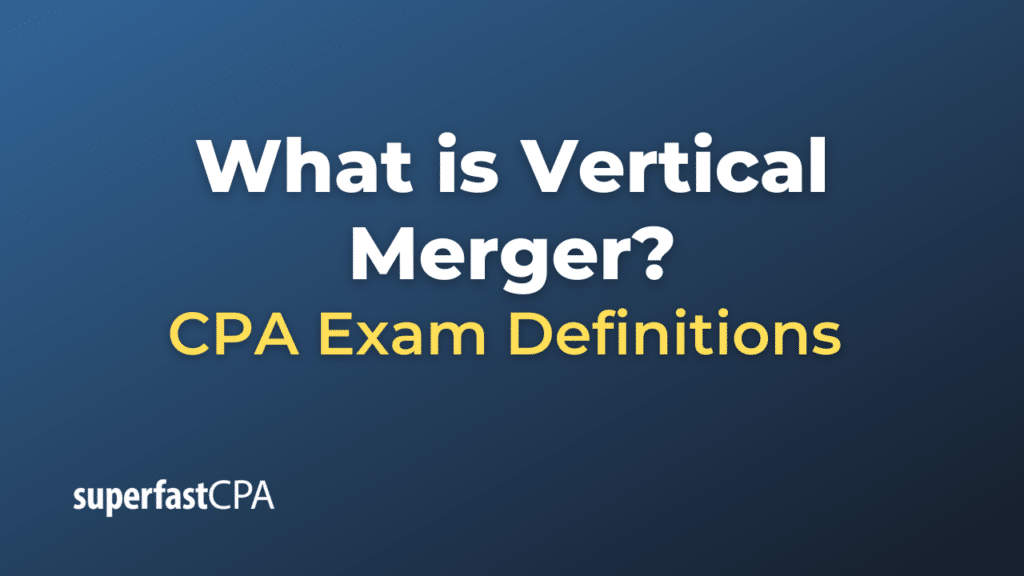Vertical Merger
A vertical merger is a form of business consolidation where two companies that operate at different stages in the supply chain of a common industry combine into a single entity. The goal of a vertical merger is often to increase efficiencies, reduce costs, or gain more control over the production process. In other words, one company acquires another company that either supplies it with products or services (backward integration) or is a customer for its products or services (forward integration).
Advantages of a Vertical Merger:
- Cost Efficiency: By merging with suppliers or customers, the parent company can reduce or eliminate markup costs.
- Quality Control: The acquiring company can exert greater control over the quality of the components or raw materials it uses.
- Reduced Dependency: The merged company becomes less dependent on its suppliers or customers and gains more control over its value chain.
- Streamlined Operations: A vertical merger can help coordinate activities across different stages of production more efficiently.
- Barriers to Entry: Owning more of the supply chain can make it more difficult for other companies to compete effectively.
Disadvantages:
- Cost and Complexity: Merging with another company can be expensive and complex to manage.
- Regulatory Hurdles: Anti-trust issues could arise, as vertical mergers can sometimes lead to reduced competition in a market.
- Business Risk: The merged company could inherit the operational or business risks of the acquired company, such as supply chain disruptions.
Example of Vertical Merger
Let’s explore the fictional example of two companies: TechGiant, a producer of smartphones, and BatteryPlus, a manufacturer of advanced lithium-ion batteries used in smartphones.
The Scenario
- TechGiant: This company specializes in designing and selling high-end smartphones. However, it relies on external suppliers for some components, including batteries.
- BatteryPlus: This smaller company has developed a breakthrough, long-lasting lithium-ion battery technology. They supply these batteries to several smartphone manufacturers, including TechGiant.
The Vertical Merger
TechGiant sees several advantages in acquiring BatteryPlus:
- Cost Savings : By producing batteries in-house, TechGiant can eliminate the markup that BatteryPlus used to charge.
- Quality Control: TechGiant can have direct oversight over battery quality, ensuring the batteries meet their exact specifications.
- Innovation: TechGiant believes that by integrating BatteryPlus’s research team, they can innovate faster and create better products.
- Supply Chain Control: Owning a key part of their supply chain would make TechGiant less vulnerable to disruptions.
The Deal
- TechGiant proceeds to acquire BatteryPlus for $200 million.
- Post-acquisition, BatteryPlus becomes a wholly-owned subsidiary of TechGiant.
The Outcome
- Reduced Costs: TechGiant saves on the costs of batteries, increasing its overall profit margins.
- Enhanced Quality: With direct control over battery manufacturing, TechGiant ensures that all the batteries meet its high standards, thereby improving the overall product quality.
- Competitive Advantage: The long-lasting batteries become a unique selling point for TechGiant’s smartphones, giving it an edge over competitors.
- Streamlined Operations: TechGiant can now better coordinate between its phone design team and the battery development team, potentially speeding up the time-to-market for new products.
- Barriers to Entry: This vertical merger makes it more challenging for new entrants to compete on battery life, a key feature for consumers.
By acquiring BatteryPlus, TechGiant has successfully executed a vertical merger, enhancing its competitive advantage, reducing costs, and improving product quality.













